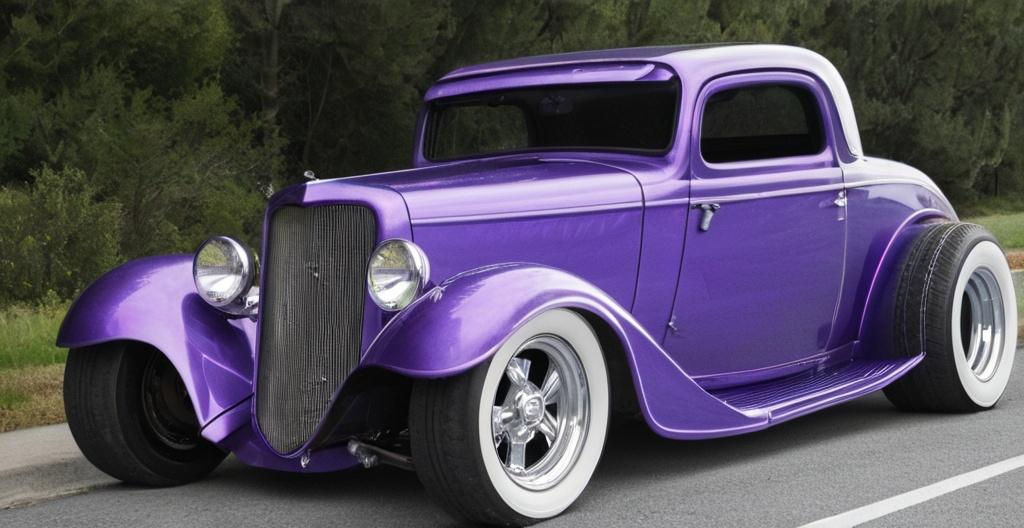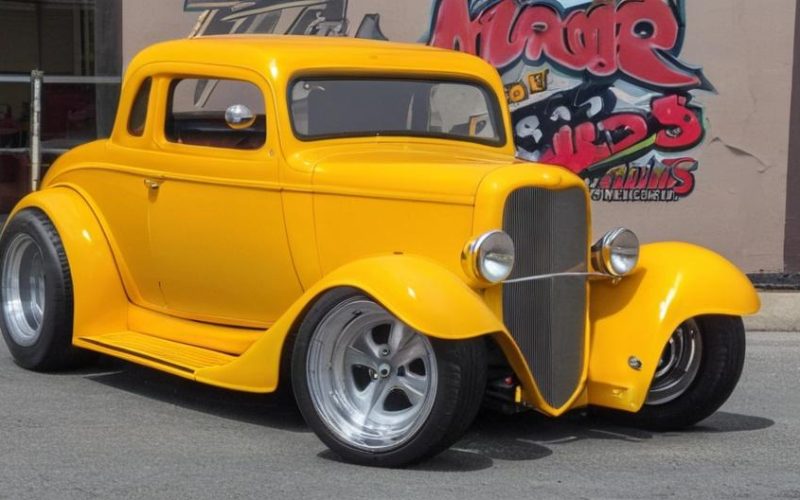Key Take Aways About Candy Paint and Metalflake Techniques
- Candy paint offers a glossy, translucent finish that changes with light and angle.
- Application requires a multi-layer process with exacting technique.
- Precise spray control and lighting are key to avoid color inconsistencies.
- Metalflake adds sparkle, requiring careful mixing and spraying.
- Flake size affects shimmer; finer for subtlety, larger for boldness.
- High maintenance: regular washing, waxing, and care are essential.
- Candy and metalflake techniques are creative expressions in street rodding culture.

The Allure of Candy Paint in Street Rodding
Candy paint, a staple in the street rodding scene, is all about that glossy, wet-look finish that makes cars pop. This paint technique involves a multi-layer process, giving cars a deep and translucent color that changes its shade depending on the angle and light. The process begins with a base coat, often a metallic or pearlescent layer, followed by a tinted clear coat which gives the color its candy-like depth.
The idea is to achieve a vibrant, eye-catching finish that seems to glow from within. But the candy paint ain’t all about looks; it’s also about the pride in craftsmanship. For those involved in street rodding, applying candy paint is an art form, a way to showcase their skills and creativity.
Application Techniques: The Nitty-Gritty
Candy paint application isn’t a simple spray-and-go affair. It requires skill, patience, and a keen eye for detail. The process often involves several coats of the base color followed by multiple layers of the candy color. The trick is to apply the paint evenly to avoid streaks or blotches, which can ruin the final appearance. Each layer needs to be applied at the right thickness, allowing sufficient drying time between coats.
Common Challenges and Tips
One challenge with candy paint is the potential for color inconsistency. If too much or too little paint is applied, the final color can appear uneven. To avoid this, many experienced painters prefer to use specialized spray guns that allow for precise control over paint distribution. Additionally, maintaining a consistent spray distance and speed is crucial.
Flexible lighting in the workspace can help spot any imperfections early on. It’s always a good idea to test on a small panel before tackling the entire vehicle.
Metalflake Techniques: Adding Some Sparkle
Adding metalflake to your paint job is like tossing a handful of glitter onto a wet canvas. This technique involves adding tiny metallic flakes to the paint, creating a sparkling finish that reflects light in a multitude of directions. Metalflake is often used in conjunction with candy paint to enhance the depth and sheen of the finish.
Choosing the Right Flake
When it comes to metalflake, size matters. The size of the flakes can range from very fine (microflake) to larger particles (jumbo flake). The choice depends on the desired effect. Finer flakes create a more subtle shimmer, while larger flakes produce a bolder, more dramatic sparkle. Always consider the base color and type of candy coat being used, as they will affect how the metalflake appears.
Application Process: Just a Little Twinkle
Applying metalflake isn’t just about sprinkling it into the paint. It requires precision and timing. The flakes are usually mixed with the clear coat and carefully sprayed onto the surface. One key aspect is keeping the flakes suspended in the mixture, ensuring an even distribution. Painters often need to constantly stir the mixture to prevent the flakes from settling.
Adjusting the spray gun to accommodate the added texture of the flake is also essential. Too much air pressure can blow the flakes around, causing uneven distribution.
Maintenance and Care
Candy paint and metalflake finishes require more maintenance than standard paint jobs. The clear coat helps protect the underlying colors and flakes, but it can be prone to scratches and fading. Regular washing and waxing can help maintain the luster. Avoid harsh chemicals or abrasive materials that could damage the finish.
Personal Experiences and Anecdotes
As a street rod enthusiast, I’ve dabbled in various paint techniques, but candy paint and metalflake have always held a special appeal. I recall the first time I attempted a candy apple red on my classic Chevy. After several trial-and-error sessions, watching that color come to life under the sun was exhilarating. A local car show gave me the opportunity to display my work, and seeing fellow rodders’ appreciation made all the effort worthwhile.
Conclusion: The Final Touch
Candy paint and metalflake techniques are more than just ways to decorate cars; they are expressions of art and personal style within street rodding culture. While the process demands precision and patience, the dazzling results speak volumes. Whether you’re showing off your ride at a local meet or just cruising, these techniques ensure that your car won’t just blend in with the crowd.
